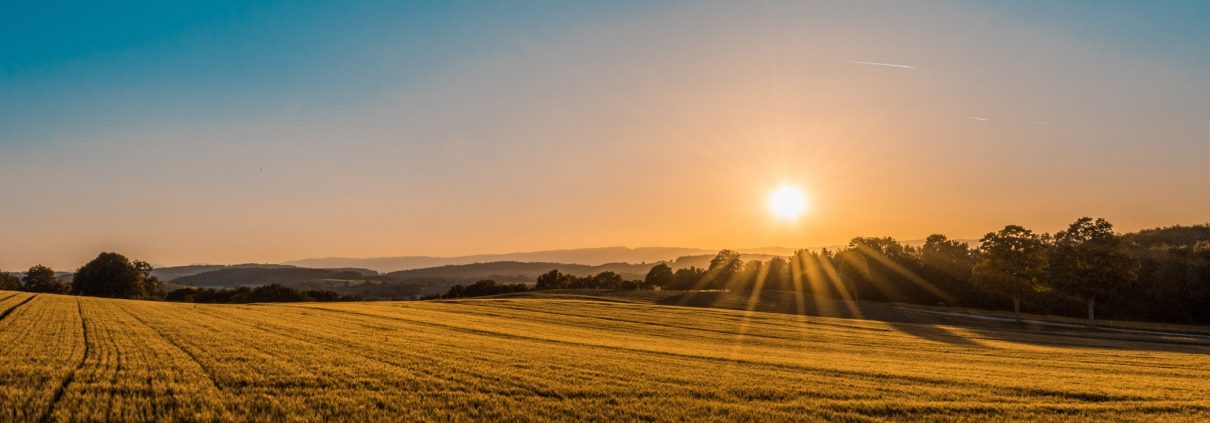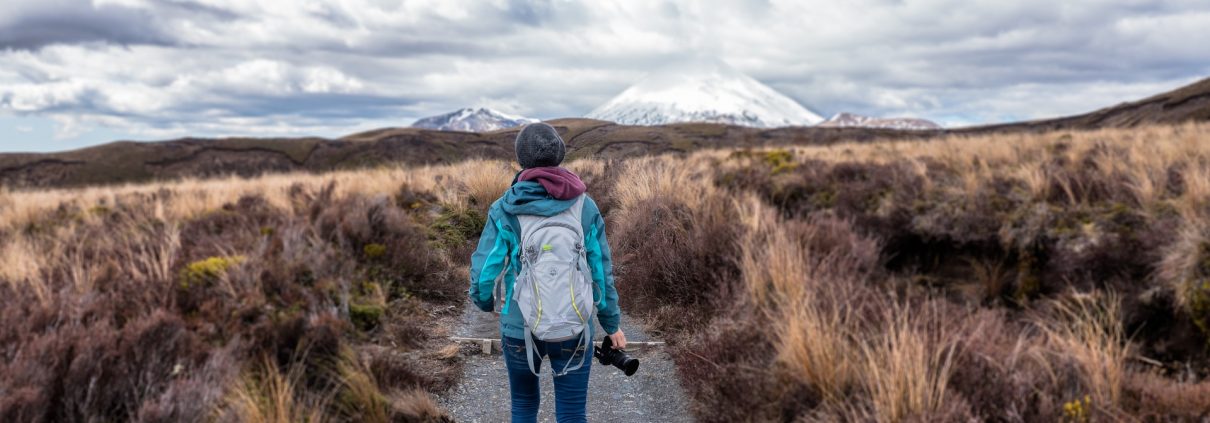Today, technology and data are changing more rapidly than ever before, transforming the commercial real estate practice at every iteration. Far removed are the days of fold-out discounted cash flow analysis reports, maps plastered with rub-off decals, and microfilm-powered due diligence. Likewise, disruptive companies such as Amazon, WeWork, and Airbnb are changing the way we use, analyze, and value property.
Due to unprecedented advances in data and technology, the tools, devices, techniques, and resources we relied upon decades ago – or even last year – can quickly become obsolete. Whether you’ve been in the business three years or 30, a tune-up may be necessary to stay abreast of the latest data sets and metrics available to commercial real estate land professionals for analyses and site selection.
New Economic Metrics and Resources for Site Selection
We have been conditioned in our training that job growth drives demand for commercial real estate and that the government’s Bureau of Labor Statistics (BLS) is the resource to consult. Due to dated methods, the BLS often struggles to accurately estimate employment growth. For more reliable data, look no further than ADP’s National Employment Report (NER), produced jointly with Moody’s Analytics, and LinkedIn’s Workforce Report with Skills-Gap Analysis.
ADP processes the payrolls for approximately one-fifth of the nation’s private payroll employment, and its monthly employ- ment data is a credible estimate of private employment activity.
LinkedIn’s Workforce Report is a powerful supplement to ADP’s National Employment Report. The report draws on employment data from the more than 190 million workers in the U.S. who have LinkedIn accounts. LinkedIn’s monthly jobs report also includes invaluable skills-gap analyses at an MSA level stratified across 50,000 employment sectors, from brokers to welders. If you are engaged in land brokerage site selection or advise companies on site selection decisions, LinkedIn Workforce Reports are a must- have in your toolkit. Had Amazon utilized the LinkedIn Workforce Report with Skill-Gap Analysis before making its HQ2 split decision, it would have known that New York ranked worst for available skilled workforce – below even Seattle or San Francisco.
It’s also prudent to seek out non-government sources for critical economic measures like gross domestic product and small business activity. These will come in handy during a government shutdown or natural disaster. The government does not produce data during a shutdown, and the data it produces during times of emergency, like hurricanes or wildfires, is often delayed. As a result, you may need to supplement with additional sources of on-demand data.
So where should commercial real estate professionals turn for this business intelligence? A good global resource is Trading Economics. Leveraging official sources, the site offers verifiable data from 196 countries including “historical data for more than 20 million economic indicators, exchange rates, stock market indexes, government bond yields, and commodity prices.”

In addition, a great proxy for GDP is the rail traffic data produced by the Association of American Railroads. The Rail Time Indicators report is an invaluable economic resource that anyone engaged in industrial real estate should have – and never leave home without. Weekly and monthly rail traffic data and the more comprehensive RTI report tell us what commodities and goods are moving, where they’re headed, and at what volumes – solid, reliable data to ascertain a true measure of economic growth.
For a powerful one-two punch of construction data and insights, check out the Association of General Contractors (AGC) and the Engineering News-Record (ENR). AGC produces a monthly survey that provides a thorough understanding of what general contractors are experiencing and forecasting, including construction materials, spending, and employment.
A perfect pairing with AGC, ENR offers a monthly periodical with a construction economics section and a 20-city index that details current and historical data on actual material and labor costs.
Rethinking Development for the Modern E-Commerce Supply
The following section of the report contains adapted excerpts from the Alabama Center for Real Estate’s report, “Logistics Infrastructure: Transformational Opportunities.”
The horseless-carriage supply chain from the 1950s cannot support a modern e-commerce supply chain that is growing at a rate of 25 to 30 percent per year. The state of the country’s aging infrastructure is not only inhibiting future economic and real estate development, it also forces existing industry to relocate to destinations that have modern logistics infrastructures. In 2019, logistics infrastructure adequacy is as important a consideration in site selection as workforce.
Take a look at the locations of new fulfillment centers for Amazon, Walmart, Target, and home improvement retailers. They are all near intermodal hubs – places like Bessemer and Mobile, Ala.; Columbus, Ohio; Polk County, Fla.; Greenville, S.C.; Atlanta; Dallas; Denver; and even Tucson, Ariz. One can also look to the locations for new aircraft, auto, and machinery manufacturing plants in Alabama, Georgia, South Carolina, and Texas. Logistics infrastructure analysis – roads, rail, intermodal, port connectivity, utility costs, and workforce – is now integral to site selection studies and investment analyses.

E-commerce also continues to drive demand for industrial warehouse space, with another 800 million to 1 billion square feet of new development expected across the U.S. over the next three years. Are your logistics site selection and investment analysis skills up to speed to aid in this explosion? Are you familiar with modern design specifications that call for higher clear ceiling heights or expanded truck courtyards to accommodate more double-trailer trucks as a result of the implementation of electronic logs for truck drivers?
And what about the feasibility of tent warehouses, which Amazon is testing in Memphis, Tenn.? These innovative warehouse designs have no columns, cost one-third of conventional masonry warehouses, and can provide clear ceiling heights of 30 feet or more.
What’s more, the ongoing innovation in traditional construction design and materials for all property types challenges our cost estimation and market feasibility skills, much like modular did in housing decades ago.
Are price or rent per square foot and traffic counts no longer the appropriate units of measure for determining price or market feasibility? Should cubic volume be a consideration, particularly in industrial? What about traffic and online versus in- store sales allocation in retail, especially with the pervasiveness of e-commerce? Consider the changes in retail real estate.
Same-store comparable sales and percentage rent clauses are nearly as extinct as branch banks.
Parking ratios also are changing. While they may be declining for office due to ride-sharing and the promise of autonomous vehicles, they are rising for retail as more space is repurposed from transactional to experiential, where parking demand is higher for restaurant and service uses (gyms, spas, etc.).
People stay longer at an experiential-use site compared to a traditional store, where people run in and out to purchase goods. In the industrial space, warehouses require larger sites and more parking to accommodate double-trailer truck hauls as well as employee parking in the fulfillment portions of these locations. The opposite trend is occurring for hotels and many types of multifamily, such as student housing. Universities – and the towns in which they are located – are realizing that fewer students own and use cars like previous generations. They use scooters and ride-sharing, or they rent electronic vehicles available on campus. Hotels are realizing a 25- to 40-percent reduction in patrons requiring overnight parking as they pivot from rental cars to ride-sharing.
The point is, traditional measures are changing. If historical data sources fail to adapt, then those measures will become be less relevant as users move toward new metrics. This adaptation is critical in that it allows commercial real estate practitioners to translate these historical measures into meaningful current data for analysis and valuation.
Moreover, the new tools and data resources developed to meet these challenges are coming from unlikely sources. Instead of using car traffic counts as a proxy for retail sales at a shopping center, telecom companies like Verizon have developed their own index to analyze online shopping traffic and patterns.
There’s clear value in looking at mobile phone traffic for retail and comparing same-store online and in-store sales. With the current ever-evolving landscape, it’s hard to separate technology from the retail industry; sources like Verizon are helping bridge that gap to provide a more accurate picture for commercial real estate analysis.
Recently, Develop LLC, an opportunity zone REIT, created the first opportunity zone index that evaluates each of the 8,700 opportunity zones based on a variety of metrics, including population density, employment, and infrastructure.
Which traditional property measures require rethinking? The short answer: all of them.
A Way Forward
For all these advances to translate into vibrant economic growth, local governments need to recalibrate, but it will take a joint effort by government and industry professionals. To this day, for example, many municipalities have yet to adopt adaptive reuse ordinances to support the repurposing of existing vacant retail buildings while preparing for the new opportunity zone program. Local governments are behind in understanding changing parking trends, revenue loss from online retail growth, and how tax assessments are impacted for real estate that is increasingly a going concern.

The secret to enduring success in commercial real estate is simple – never stop learning, never become complacent. Proactively adapting to the latest data sources and technology in valuation and financial and market analyses is vital. It’s a matter of keeping your career engine purring or being left behind by your competitors, stalled roadside.
 About the author: K.C. Conway, MAI, CRE, is the Chief Economist for CCIM. Conway is also the Director of Research and Corporate Engagement at the Alabama Center for Real Estate. With more than 30 years of experience in commercial real estate, Conway is a nationally recognized expert and speaker in the industry.
About the author: K.C. Conway, MAI, CRE, is the Chief Economist for CCIM. Conway is also the Director of Research and Corporate Engagement at the Alabama Center for Real Estate. With more than 30 years of experience in commercial real estate, Conway is a nationally recognized expert and speaker in the industry.
A New Development Matrix for Today’s CRE Industry
By Mark Van Ark, CCIM, SIOR

Many commercial real estate land professionals may be familiar with James Graaskamp, Ph.D., SREA, CRE, and his early work on real estate development, “The Fundamentals of Real Estate Development,” published nearly 40 years ago. In it, he created a rather intricate workflow and description of the development process outlining the political, social and enterprise components. The process was so involved, however, that most needed classroom guidance from Dr.
Graaskamp to fully understand the process and its many nuances.
Fast forward to 2012. Daniel Kohlhepp, Ph.D., MAI, with Johns Hopkins Carey Business School’s Edward St. John Real Estate Program decided to take Graaskamp’s work one step further and make the whole process more accessible. Kohlhepp incorporated his own personal development experience to create a new, more comprehensive real estate development matrix, expanding Graaskamp’s three stages to seven. As a result, the new development matrix provides a clear roadmap of the entire real estate development process from the land banking stage to the redevelopment stage: land banking, land packaging, land development, building development, building operation, building renovation, and site redevelopment. It’s a new matrix for today’s commercial real estate professional. Much like employment data and the other metrics and data sets discussed in the article, a new matrix was needed to reflect the advances and sophistication of today’s development process.
Three years ago, CCIM Institute leveraged Kohlhepp’s matrix as the linchpin in the CCIM Development Specialty Track series, which takes a deep dive into all seven stages – from the land banking stage to the redevelopment stage – and incorporates real-world application every step along the way. There are four stages of Kohlhepp’s matrix that are of particular interest to the land brokerage practice – Land Banking, Land Packaging, Land Development and Building Development. Gaining clarity and a greater understanding of the language, workflow, goals and hurdles of developers helps create value and deepens relationships with the development community.
Editor’s Note: This article is an adapted excerpt from CCIM Institute’s 1Q2019 Commercial Real Estate Insights report titled “Long May You Run: An Essential Commercial Real Estate Tuneup.” For the full report, visit www.ccim.com/insights.
This article was originally published in the Summer 2019 Terra Firma magazine.







































 About the Author:
About the Author: 








